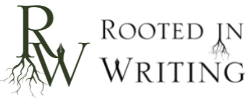Revision is key to good writing, but what strategy will help you the most? In this article, we discuss different techniques to help you form a revision strategy that works best for you!

I once had a professor tell me “To write is to revise,” and while I may have rolled my eyes at him at the time, I’ve come to live by those words. Revisions are what separate crude ideas from chiseled masterpieces.
Your revision style is kind of like a preferred medium to paint with. Some like to work with acrylics, where the paint dries quickly and you can revise your composition as you go, while others like to use oils, which has to be worked on in stages to allow some paint to thicken before moving on to blending and adding details. It all depends on how far you want to get in your project before making adjustments.

Revising Your Scenes as You Write
Pros:
- You have a better feel for the direction of the story as you write it, and unless you have a major overhaul to your plot, will have little revision to do after the first draft.
- You’re more confident in sharing your first draft with others, if you’re willing to share.
- For some writers, revising yesterday’s words help focus them for the writing they have to do today.
Cons:
- If you have a major overhaul in your plot, you’ve wasted a lot of time perfecting something that’s going to be scrapped. Yes, you’ve learned a lot about your characters and tone, but you can also learn about those things as you spend more “story time” with them.
- You can fall into the revision cycle, where you never progress your story because you become obsessed with tweaking what little you’ve already written until it’s perfect. And for some, this means they will never finish the story.
- For some writers, these revisions mark the ultimate caliber of how good the rest of the story will be. “If my first three chapters aren’t perfect, then the ending will flop.” (And that’s just not true, writer.)
Revising AFter Each Structure Milestone
Pros:
- Unlike revising everything as you go, revising after each structure milestone lets you see the overall progress of your characters and plot and make any major adjustments necessary. Revising in this way usually focuses more on big picture stuff than sentence-level tweaking.
- Revising in parts is more comparable to writing your first and second draft than creating a perfected piece. You get your initial story down, refine the major players, and move on. When you come back around after the entire story is finished, you can focus on sentence-level revisions.
Cons:
- If you’re following a story structure that closely (like the Three-Act or Seven-Point Plot structures), you may feel pressured to know your pivotal scenes as you go. For some writers, especially discovery writers (aka Pantsers), these defining moments in your story won’t reveal themselves until after you’ve written the resolution.
- Hand in hand with this,you run the risk of sticking yourself too closely to a particular structure. Story structures are excellent guidelines and tools, but be careful not to let them define your work.
Revising After the First Draft

Pros:
- Whether you’re a pantser or a plotter, your story always looks a little different when it’s finished than when it was first conceived. Waiting to revise until you’ve reached the end can give you a clear look at how your beginning needs to mirror the resolution and what the trials throughout your story need to accomplish to make your ending satisfying.
- If you’ve read Bird by Bird by Anne Lamott, then you’ve heard of “Sh***y First Drafts.” I love this concept. Your first draft doesn’t have to be perfect, good, or even close to your final vision of the story–it just has to be. If you have trouble finishing your projects, then this is the philosophy for you. Write your first draft in all its imperfect glory and trust that revisions will one day come. It’s always better to have a crappy first draft to work with than no draft at all.
Cons:
- By the time you reach the end of your story, you realize the beginning was all wrong or that there needed to be an extra character or your hero wasn’t cast right for the part. This can cause a lot of headaches as you go waaay back to the beginning and scrap your first 20,000 words.
- It can often seem overwhelming to revise a manuscript of 50,000+ words versus smaller chunks. There are characters, worlds, conflict, and prose to keep in order. Depending on how you handle multi-tasking, deciding where to start can be really stressful.
Want to publish, but you’re not sure your book is ready?
Get a manuscript evaluation on your novel!
We’ll give your book a thorough review and let you know its unique strengths, biggest areas of weakness, and marketability. We’ll also provide you with a synopsis of your book to use in pitching plus five concrete revision steps you can take today to make your book the best version of itself! Contact us to book your evaluation today!


Amber Helt is the managing editor and writing coach at Rooted in Writing. She has her Bachelor of Arts in creative writing with certificates in French and linguistics. She’s the co-chair of the North Texas chapter of the Editorial Freelancers Association and teaches workshops on writing and editing throughout Dallas. Amber writes dark fantasy and is currently working on her novel, Grimm Reality.
You can hang out with her on Instagram @Amber.Helt and her personal blog www.AmberHelt.com.

